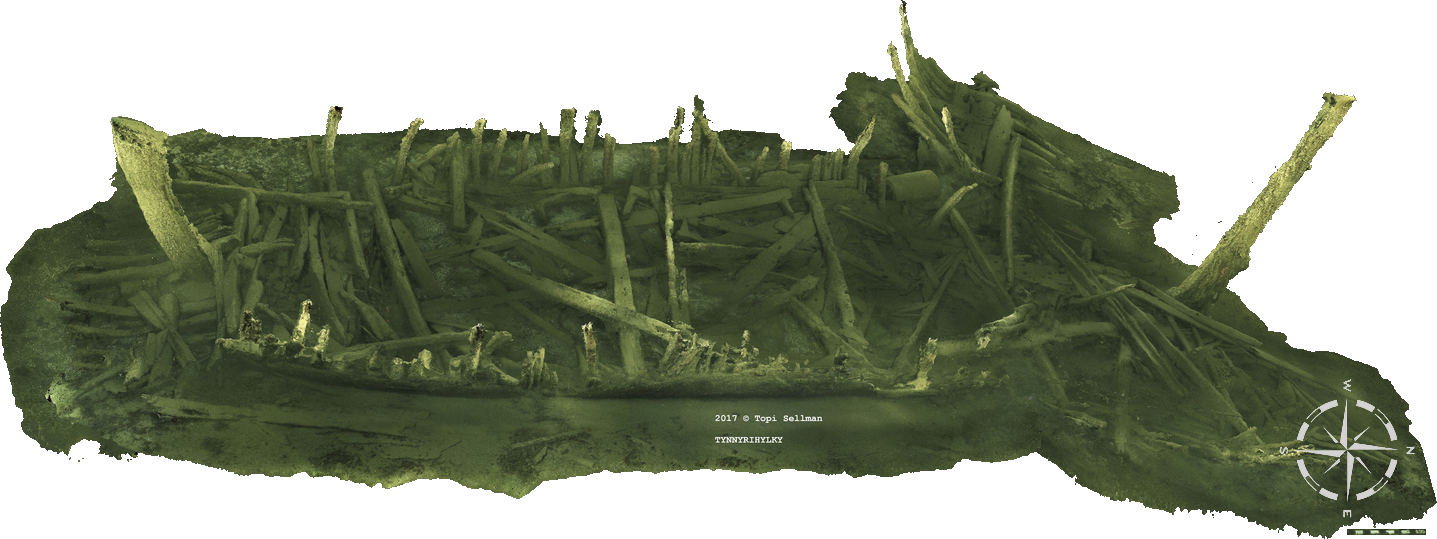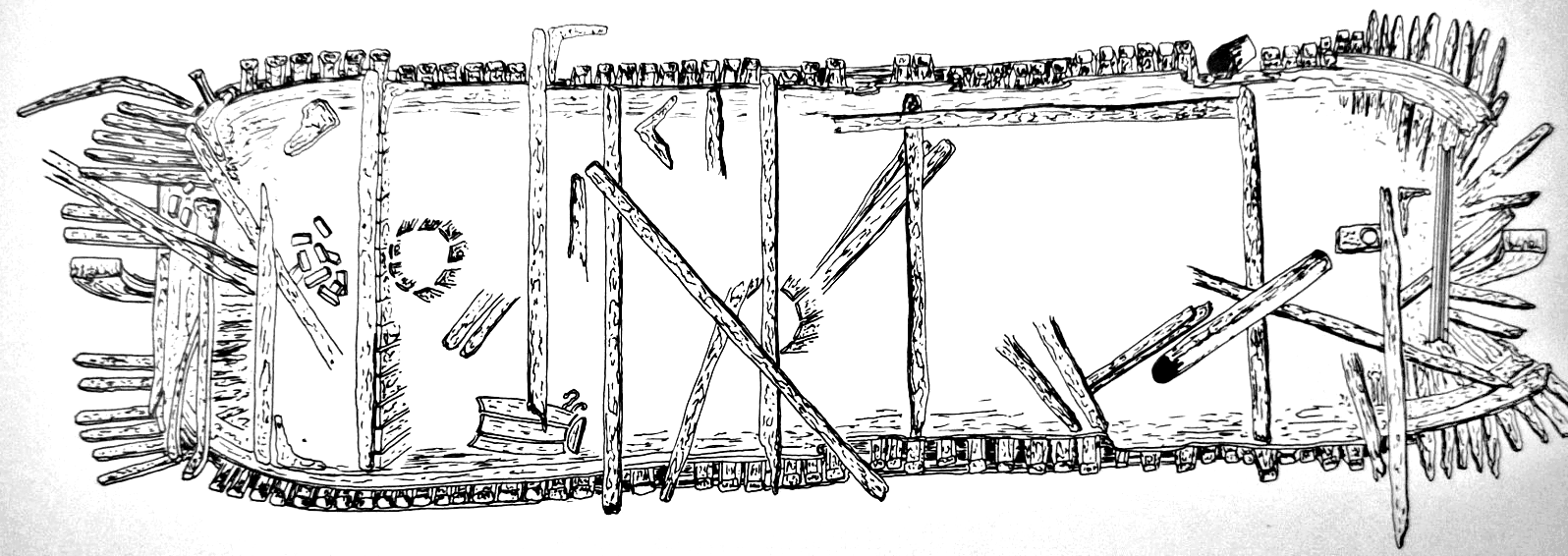Barrel Wreck
June 15, 2018Any observations about the wrecks or park facilities: info@wreckpark.eu or +358 44 920 1647 (sms)

The Barrel Wreck lies half buried in silt at about 18 to 20 meter’s depth. On an good day, when the visibility is good and the sea is calm, it can be an interesting dive even for an open water (P1) diver with some experience. Due to the bottom silt and currents, the conditions are sometimes less optimal and thus advanced (P2) divers, with night diving experience, should dive first.

The wreck was already discovered in the 70’s, but Finnish Heritage Agency became aware of it in the mid 80’s. Thus it was 1987, when FHA investigated the Barrel wreck with Teredo Navalis diving club. The sketch on the left depicts the wreck’s condition well into the 21st century. This is unfortunately not the case anymore, as can be determined from the recent 3D model and depiction on the dive slate. The starboard side of the stern has been ripped several meters apart, most likely because of anchoring damage to the wreck.

Several barrels of cargo can still be found in the wreck, hence its name sake. The stem and sternpost are still in place and give excellent hints about the shape of th vessel’s hull. Near the bow, several remaining bricks from the ship’s hearth i.e. stove can be seen. The remains of a bilge pump and scupper can be found to the stern of the vessel.
A guide line with six information boards along the tour are established on the Barrel wreck, whilst the park is open. Additional transfer lines lead to the mooring buoy and to the Alko wreck.
The Sketchfab window embedded below, presents a 3D model of the wrecksite, based on which the above depictions and illustrations were created. The images were extracted from SONY 4k video and Agisoft Photoscan was used for photogrammetric modeling.
More information (in Finnish) may be found at Hylyt.net or from the Finnish Heritage Agency.
